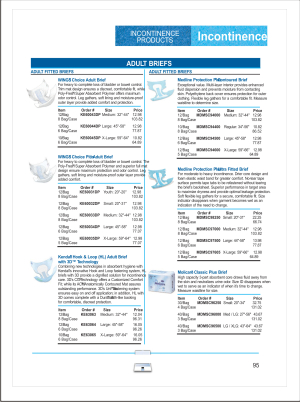|
While Medicaid covers many incontinence supplies for home use, Medicare is much more sparing in its coverage. Medicaid covers miscellaneous incontinence supplies under a specific code, as well as the following: diapers, disposable underpads (or chux), incontinence diapers, pull-up briefs, and disposable liners or shields.
The following supplies are not covered by Medicaid: sanitary napkins, cosmetics, dentifrice items, tissues, non-ostomy deodorizing products, disposable wipes, shampoo, and general personal hygiene items. Keep in mind that these are guidelines only, as Medicaid coverage varies by state. More detailed information is included in your incontinence handout.
Medicare reimburses based on the basic threshold requirements, and DMERC medical policies include quantity limits for each item. And as with ostomy and other medical supplies, usage above the quantity limits set forth by Medicare require special documentation. Medicare has specific guidelines that include allowable quantities of items that will be covered per billing period, and those are included in your handouts. Items like indwelling catheters, leg drainage bags, bedside bags, and supplies for intermittent catheterization are covered there.
There are also guidelines for the intermittent irrigation of indwelling and external catheters. These guidelines are included in your handouts.
DMERC medical policies cover supplies for intermittent irrigation of indwelling catheters only when they are used on an as-needed basis due to an acute obstruction of the catheter. Routine intermittent irrigation and continuous irrigation as a primary preventive measure are considered medically unnecessary and will be denied. Supplies for continuous irrigation are covered only if there is a history of obstruction and the catheter cannot be kept open with intermittent irrigation. The medical record must contain documentation to the necessity for either intermittent or continuous irrigation. Medicare also covers male external catheters when used as an alternative to indwelling catheters by patients who have permanent urinary incontinence. Limits are 35 per month unless the medical record documents the necessity of greater use. Female external urinary collection devices are also covered under the same conditions, with coverage ordinarily limited to one metal cup per week or one pouch per day. |



 Incontinence
and PPS
Incontinence
and PPS